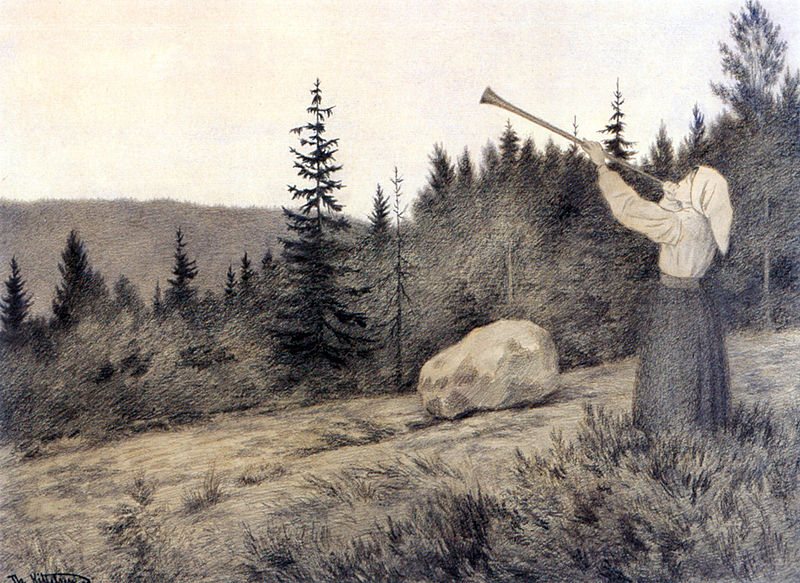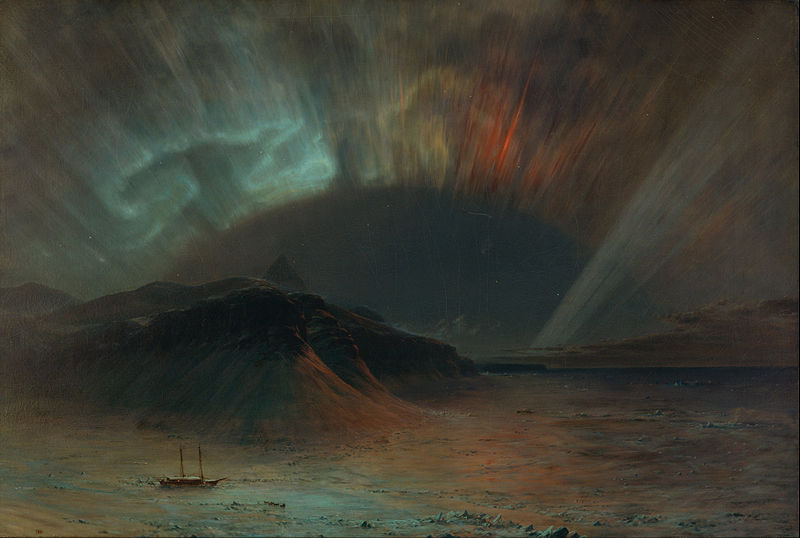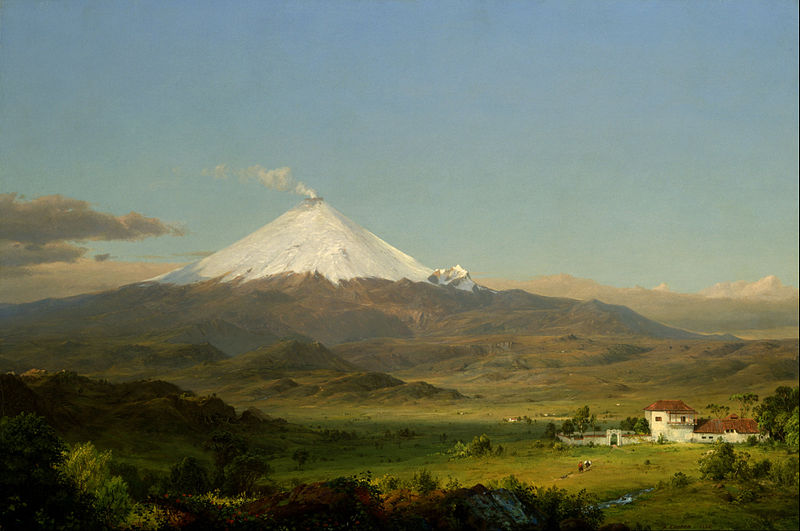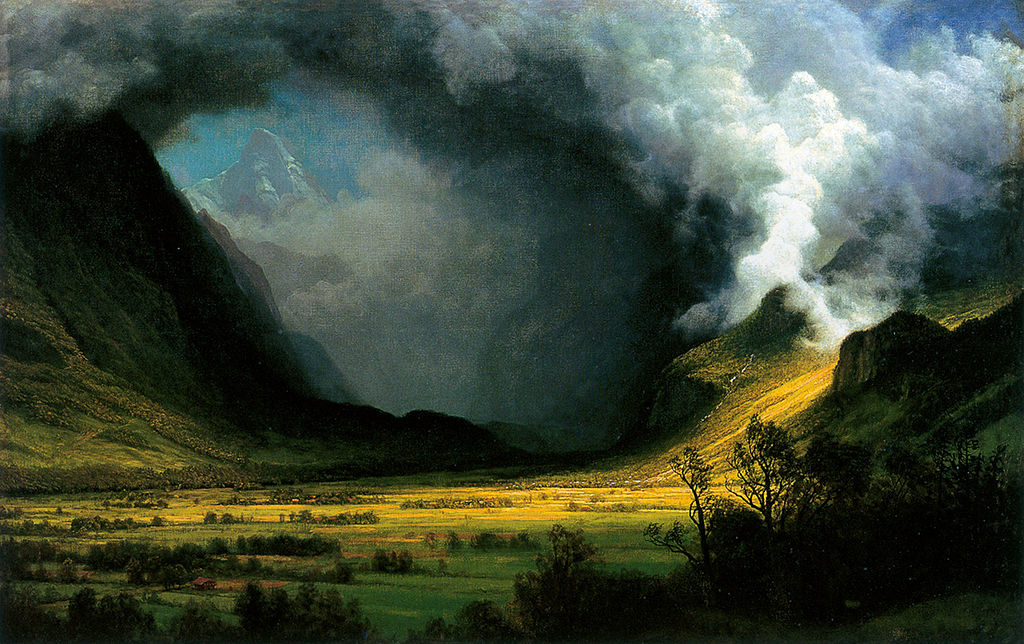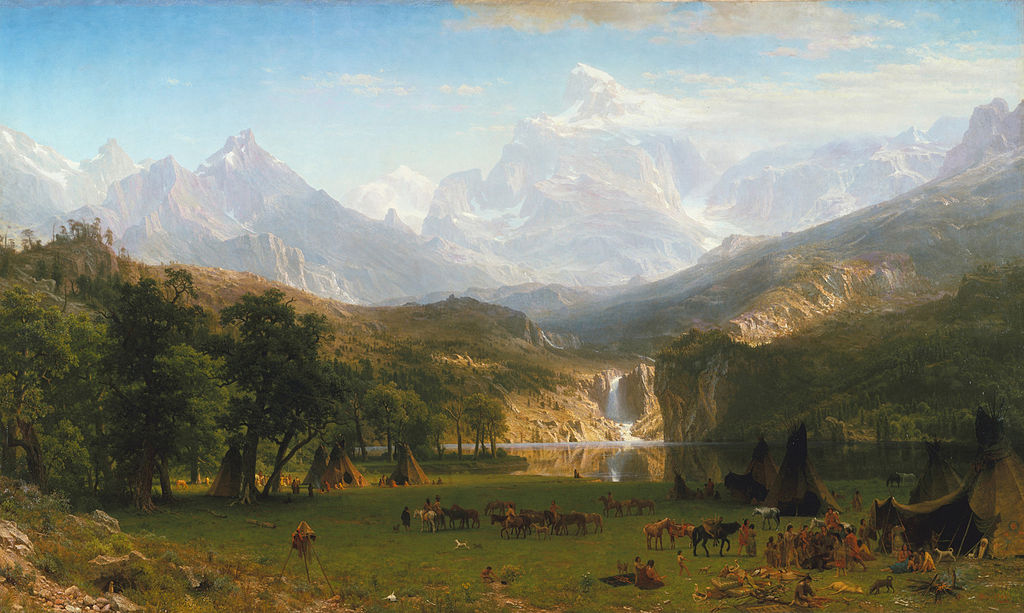
Caspar David Friedrich, Wanderer above the Sea of Fog, 1818
Landscape paintings place an emphasis on the grand scale of nature. When humans are depicted in these works, it is only as a tiny part of the vast and eternal, natural world. This art style became popular in the West through the Romantic tradition.
Romanticism was a prominent movement in Europe that arose in the late 18th century as a counter-movement to the Enlightenment's values of order and logic. Artists of the Romantic Era often depicted scenes highlighting the rich beauty of the untamed wilderness. The German Sturm und Drang movement was especially important, which preferred intuition and emotion over rationalism. There was a strong recourse in the heroic, natural and inevitable - a zeitgeist in the representation of ideas. Artist Caspar David Freidrich summarized the movement best when he said, "the artist's feeling is his law."
Particularly important in Romantic, Landscape works is the effect of nature upon the artist, when he is surrounded by it and preferably alone.
It is important to note that the Romantic Movement emerged after the beginning of the Industrial Revolution. In opposition to the destruction of the natural world, many artists latched onto the beauty and power of the natural world.
Below we include more information on some noteworthy Landscape Artists in this movement as well as a depiction of some of their works.
GERMAN PAINTERS
CASPAR DAVID FRIEDRICH
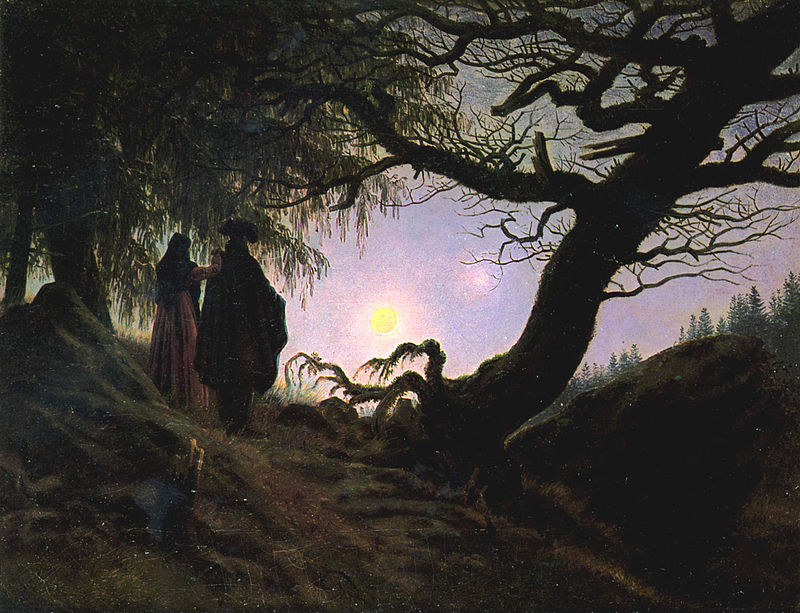
Man and Woman Contemplating the Moon, 1830-35
Caspar David Friedrich (5 September 1774 – 7 May 1840) was a 19th-century German, Romantic landscape painter, and is generally considered the most important German artist of his generation. He is best known for his landscape works which typically feature contemplative figures silhouetted against night skies, morning mists, barren trees or Gothic ruins. His primary interest as an artist was the contemplation of nature, and his often symbolic work seeks to convey a subjective, emotional response to the natural world. Friedrich's paintings characteristically set a human presence in diminished perspective amid expansive landscapes, reducing the figures to a scale that, according to the art historian Christopher John Murray, directs "the viewer's gaze towards their metaphysical dimension."
Rather than just providing pretty pictures of nature, he sought to provide a sublime experience - a spiritual experience, gained through the contemplation of nature. Freidrich is said to have been instrumental in the depiction of landscape as full of Romantic feeling. In addition to depicting a wide array of geological features, such as rock coasts, forests and mountains, his work also expresses a sense of religious mysticism, the inevitability of death, and elements of Germanic folklore.
Friedrich said, "The artist should paint not only what he sees before him, but also what he sees within him."
LINKS ON CASPAR DAVID FRIEDRICH
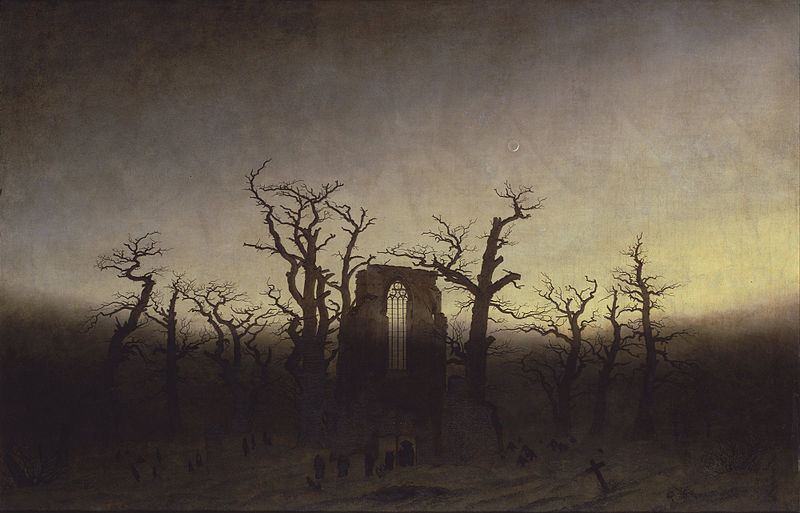
The Abbey in the Oakwood, 1808
NORWEGIAN PAINTERS
JOHAN CHRISTIAN DAHL

Shipwreck on the Coast of Norway, 1832
Johan Christian Claussen Dahl (February 24, 1788 – October 14, 1857), who is often known as J. C. Dahl or I. C. Dahl, was an artist who is considered the first great romantic painter in Norway and the founder of the "golden age" of Norwegian painting. As one critic has put it, "J.C. Dahl occupies a central position in Norwegian artistic life of the first half of the 19th century.
Although Dahl spent much of his life outside of Norway, his love for his country is very clear in the themes he chose for his paintings, as well as in his extraordinary efforts towards Norwegian culture in general. Even with his monumental artistic creations set aside, his other activities on behalf of art, history, and culture would still have guaranteed him a place at the very heart of the artistic and cultural history of Norway. He was a key figure in the founding of the Norwegian National Gallery as well as in the preservation of Norwegian stave churches and the restoration of the Nidaros Cathedral in Trondheim and Håkonshallen in Bergen.
According to Dahl, nature was his greatest teacher. In 1812 he wrote to Sagen stating that he was studying "nature above all." As an artist of the landscape tradition, he was as faithful as possible to nature itself. Dahl believed that landscape painting should not just depict a specific view, but should say something about the land's character: the greatness of its past, and the life of its inhabitants. The mood of his paintings was often idyllic and melancholy.
LINKS ON JOHAN CHRISTIAN DAHL

View of Dresden by Moonlight, 1838
